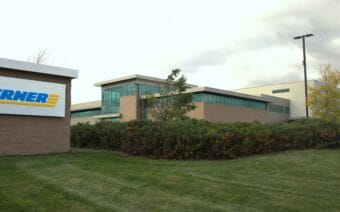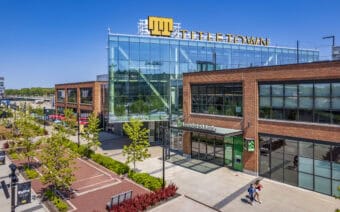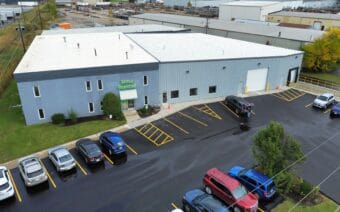
November 17, 2025
APPLETON – Fox Valley Technical College (FVTC) students got a firsthand look at the future of farming when Riesterer & Schnell brought a John Deere autonomous tractor and AI-powered tillage tool to campus.
Beau Dvorachek – strategic solutions manager at Reisterer & Schnell – said the visit included a live field demonstration showing how to set up the tractor and tillage tool to operate autonomously without a driver in the seat.
Dvorachek said the John Deere 8R 410 autonomous tractor is built to operate without a driver, using advanced technology such as Starlink, AI, GPS and cameras.
The innovation, he said, not only boosts efficiency but also allows farmers to manage tasks remotely.
Dvorachek said the FVTC demonstration provided students with a glimpse of the technology that Riesterer & Schnell is actively testing, with several Wisconsin farms already participating in field trials.
Farming smarter
Dvorachek said the FVTC demo underscored more than just a novelty – but provided an opportunity to highlight technology that can reshape farm operations.
On a large farm, he said, one person could manage two or three machines from a central location, while on a smaller farm, the autonomous tractor could work the field as the farmer attends to other essential tasks.
“The key is making farming more profitable,” he said.
With farmers constantly juggling crop schedules around unpredictable weather, Dvorachek said autonomous machinery allows tractors to work overnight, giving farmers rest and enabling morning planting – keeping them ahead without waiting days to complete tasks.
Studies, he said, have shown that even a one-week delay in planting can reduce crop yields and profits.
But beyond the financial impact, Dvorachek said autonomous tractors let farmers trade long hours in the cab for monitoring multiple machines – and a little more time for life off the field. Dvorachek said the technology can also support farmers in controlling rising labor expenses.
“Farmers need to stay efficient and keep costs manageable without sacrificing their ability to continue farming and adopt new technology,” he said. “In many cases, the prices are what they were in 1970 and 1980, so farmers are having to be as efficient as they possibly can. That’s one way autonomy can help.”
Hands-on experience matters
Trevor Balthazor, 25, digital product specialist at Riesterer & Schnell, said he has been farming his whole life.
And despite his background in digital technology, he still returns to his family farm, where the tractors don’t have auto steer.
However, Balthazor said that firsthand experience has been invaluable as he meets with potential customers to demonstrate how the new autonomous tractor can transform their operations.
“There are a lot of older gentlemen gradually getting into the technology and seeing the benefit of it,” he said.
Tools once dismissed – such as AutoSteer and AutoTrac – Balthazor said, are now starting to make sense when one looks at the return on investment.
Many farmers, he said, are rethinking their views on technology after seeing the new autonomous equipment in action.
Understanding why some remain hesitant about adopting new technology, Balthazor said he emphasizes that the autonomous equipment isn’t designed to replace workers.
Instead, it aims to make those on the job more effective and productive while supporting a more sustainable operation.
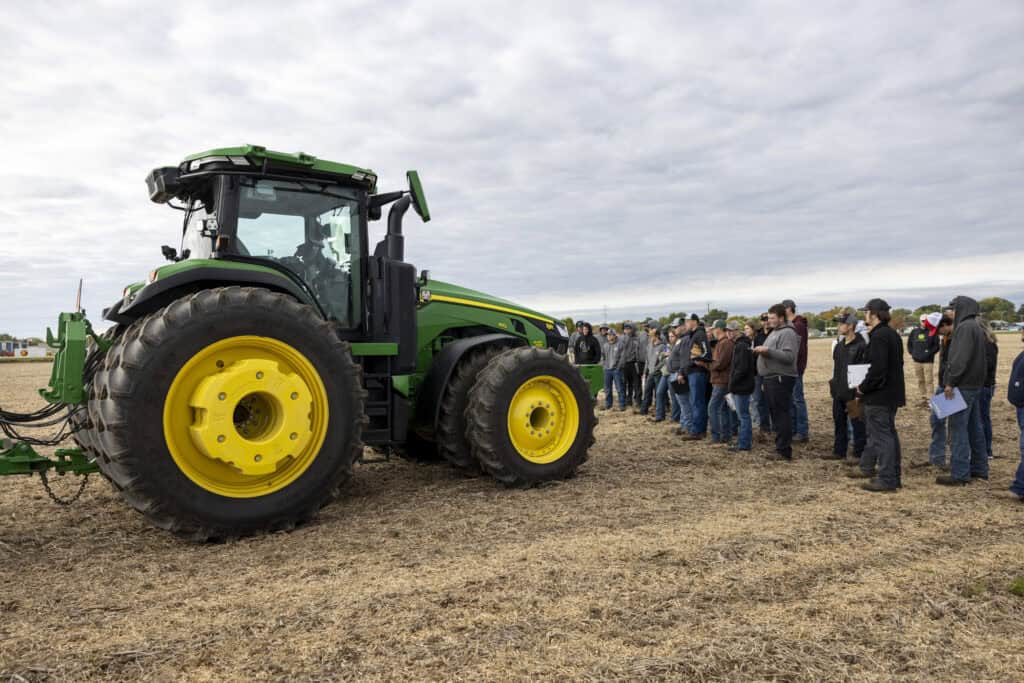
He said he also reminds farmers that adopting new technology is optional.
“Ultimately, what we’re doing with field boundaries, mapping and picking out obstacles, any farmer could go sit in the cab and use every bit of technology that we’re using here and just be an operator sitting in the seat,” he said. “This isn’t totally new technology per se – it’s integrated technology. We’re removing the need to always be in the seat.”
Ag education with AI in mind
From an educational standpoint, Justin Wege – department chair and instructor for ag technologies at FVTC – said artificial intelligence is reshaping how the school teaches and what it prioritizes in its curriculum.
The college’s top priority, Wege said, is teaching students how to troubleshoot technology, helping them understand that as technology evolves, tools may look and operate differently from what they’ve previously learned.
A challenge, he said, is keeping pace with rapidly evolving technology, which requires adequate funding and resources.
Wege said FVTC does a great job supporting its programs and collaborating with industry partners to enhance the curriculum, giving students more practical, hands-on experience.
He said his main concern is making sure students fully grasp the technology, particularly as their experiences evolve and future success relies more on computer science skills than on traditional mechanical expertise.
“Of course, we can’t predict what’s coming out,” he said. “We can be resilient, and we can be flexible on what we have to learn, and I think that’s great. It’s the unpredictable you have to be aware of, and those are the skills we have to teach. What’s going to be in my toolbox and what tool do I need today to solve a problem like that?”
Students see AI benefits, challenges
Sawyer Bohm – a third-year FVTC student and in his first year of the precision agriculture program – said he can already see both the benefits and risks of using AI in the field.
“Farming is a lot of labor,” he said. “There are a lot of people worried that AI is going to take all the labor away and people will just be pushing computer buttons. I don’t think it’s really going to come to that. I think we’re going to have AI to help us, but we’re still going to need someone to make sure it’s running correctly.”
Bohm said he believes that as technology improves, equipment will become smaller and less specialized, eventually able to operate autonomously around the clock as needed.
He said he sees this as a way to increase efficiency while allowing farmers to focus on other essential tasks.
As these advanced tools become more common, Bohm said on-the-job training – though sometimes costly and time-consuming – is a must for students to fully understand and use the technology in real-world settings.
AI on the field
According to Dvorachek, a major benefit of utilizing AI in farming is that the cameras are always learning about what they’re seeing – and are able to detect boundaries and objects such as humans, vehicles and trees, and stop immediately.
He said they are also being used to identify various crop and soil stubble types.
Dvorachek said the current version of the software – as of October 2025 – is approved for use in corn and soy fields.
However, he said developers are actively working to expand its capabilities to wheat stubble and other crops, as well as to detect objects to ensure only approved items remain in the field.
Balthazor said AI is a valuable scouting tool for farm managers and crop scouts.
With cameras monitoring every part of a field and learning while moving at 15 miles per hour, he said the technology’s potential becomes clear.
Citing John Deere’s See & Spray system as an example, Balthazor said the technology identifies weeds in detail, sends the data to John Deere’s centers and delivers instant reports to operators.
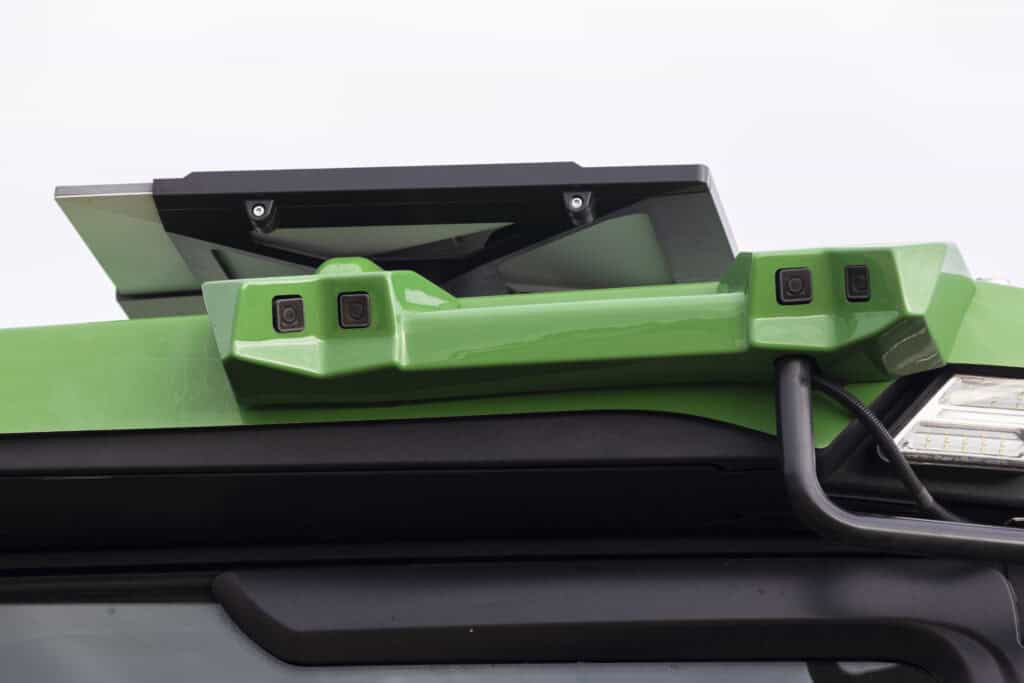
This, he said, allows farmers and producers to be proactive, especially when managing vast areas where inspecting every part of the land on foot isn’t feasible.
Dvorachek said research and development moves quickly at his dealership, with weekly meetings set up to review improvements and new software updates arriving from John Deere every Monday.
And though, currently, the only approved AI machine from John Deere is for tillage, Dvorachek said AI is here to stay and will continue expanding into other areas of farming.
“They’re going to do this with planters and harvesters, too – the technology is there,” he said. “They’re just fine-tuning. The tillage model we have right now is the tester, and they expect to have units available starting in February.”
Though every model will not require AI, Dvorachek said the technology offers the greatest benefit for tractors covering thousands of acres each year.
Shaping careers in agriculture
With a lifelong background in farming and 20 years at Riesterer & Schnell, Dvorachek said the need for precision technology began emerging 20-25 years ago with basic pass-to-pass systems that minimized overlap.
The focus, he said, was on improving efficiency and reducing costs related to equipment wear, fuel and labor.
“If you asked me 25 years ago if I was going to see a tractor driving around the field without someone – I never had that dream,” he said. “We have to find ways to keep innovating. The larger farms are the ones driving the change, and the rest of us have to adapt. What we’re seeing today is just the start of what the future holds.”
As automation has become increasingly integrated into agriculture, Dvorachek said new career opportunities have also emerged – roles that are creative and computer-science based, rather than purely hands-on in the field.
Which, he said, makes the demonstration at FVTC even more impactful.
“We need educated people to do these careers,” he said. “New jobs are being created in the business place. A year ago, we didn’t know we had this technology available to us. Now, we do. We have to study it, understand it, fix it and optimize it.”
Looking at his own Riesterer & Schnell dealership, Dvorachek said just a year ago, they didn’t have any positions related to AI tractors or implements.
However, since then, they have begun creating roles for data analysts and AI specialists who study the system’s data and images to understand why a tractor may have stopped.
Dvorachek said Balthazor – who only recently joined the project and has been focused on AI optimization and troubleshooting tractor stoppages – exemplifies the crucial role such positions play in large-scale farming
The creation of technology-focused positions at his dealership, Dvorachek said, reflects a forward-thinking management strategy and has allowed Balthazor to work in a field that’s helping shape the future of agriculture.
“I preach to the students and customers, it’s technology you need to work with at the end of the day,” Balthazor said. “It’s just a big computer, and there are days that it can be frustrating, but stay resilient and keep learning.”
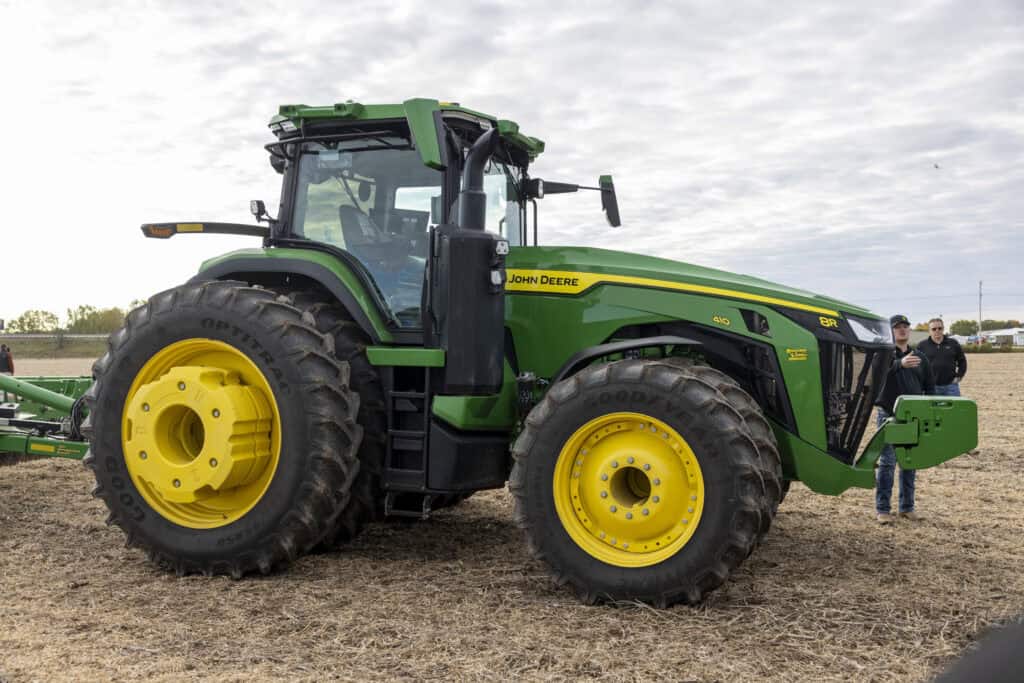
Preparing for the future
Looking ahead, Dvorachek said he sees AI serving as a predictive tool, helping farmers anticipate issues rather than always reacting to them.
In a similar vein, Wege said FVTC has historically taken a reactive approach but is now emphasizing proactive efforts, citing the AI tractor demonstration as an example of preparing for technology that is “knocking at the back door.”
Dvorachek said he sees a future in farming that is both more prosperous and less taxing, and hopes the demo inspired students to explore careers in the industry.
“It’s not as labor-intensive as it once was,” he said. “There’s a lot of technology in it, and the equipment and tools are really cool. When you’re creating food or growing food for the world, it’s easy to take pride in that.”
Similarly, Wege said he believes that with the rise of new technologies, a lack of farming background won’t prevent someone from pursuing a future in agriculture.
“There is a job in agriculture for everybody,” Balthazor said. “It’s not all getting down in the grease and manure. There are lots of opportunities out there that people don’t see or know about.”
 Fostering conversations around statewide childcare crisis
Fostering conversations around statewide childcare crisis Ayres engineers 50 years in Green Bay
Ayres engineers 50 years in Green Bay


